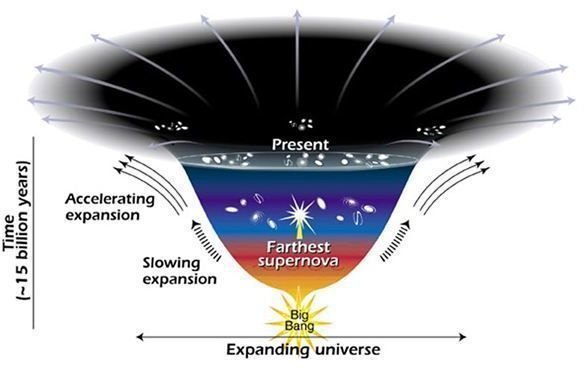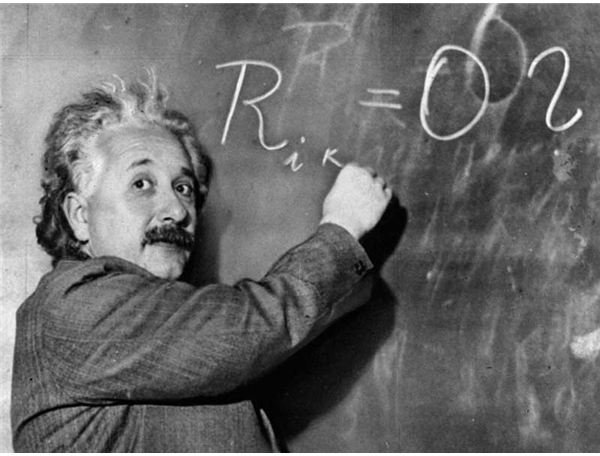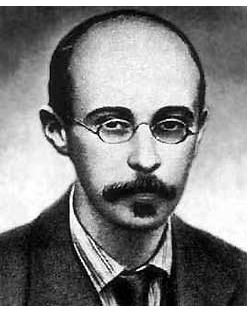Facts about Alexander Friedman: Inventor of the Big Bang Theory
Alexander Friedman was born in St. Petersburg Russia in 1888, when the country was under the rule of Tsar Alexander III. Both of his parents were performers, his father a ballet dancer and his mother a pianist. At the age of 8, young Alexander began going to school at the St. Petersburg Gymnasium, graduating second in his class behind his friend and future colleague Yakov Tamarkin. The two would remain close friends and pursue their mathamatical education together at the University of St. Petersburg. In 1913 Alexander completed his examinations for a Master’s Degree and was appointed to a position in the Aerological Observatory in Pavlovsk, a suburb of St Petersburg. The next year Europe exploded into the First World War, and Alexander suspended his work to volunteer for the Russian Airforce.
Russia pulled out of the war a few years later only to be plunged into its own Civil War, with the Communist Bolshevik Party fighting for supremacy of the country. In the confusion and violence of the war, Friedman’s work at the Central Aeronautical Station was stopped. He was lucky enough to survive the war without getting conscripted or killed, and once the Communists won Alexander was about ready to submit his Master’s Thesis on the hydromechanics of a compressible fluid. With a degree firmly under his belt, Friedman moved to the city of Petrograd in 1922 where he took an interest in the works of Einstein. The theory of general relativity had been published in 1915, but had not reached Russia because of the First World War and the Civil War.
Discovery of the Big Bang
General relativity is a modern theory on the inner workings of gravity. Before Einstein, Isaac Newton discovered that a force of

attraction exists between two objects based on their masses and the distance between them. His universal law of gravitation was a short equation that could describe the movement of everything from the planets orbiting the Sun to an apple falling from a tree. Einstein’s theory in 1915 explained the how to Newton’s what. An object with mass actually bends the fabric of spacetime causing trajectories to curve towards it. The Moon orbiting the Earth is actually following a straight path in an area of curved space. The exact relationship between mass and space and time is explained in a series of 10 differential equations that we call the Einstein field equations.
Friedman started with the assumption that the universe is homogenous and isotropic; meaning that it is more or less made of the same stuff and spread out evenly in every direction. With this view the universe can be thought of as one giant fluid, which Friedman just happened to have a master’s degree in. He manipulated Einstein’s field equations to show how the universe as a whole would act under this new theory of general relativity, but realized that he was missing some very important information. He had no idea what the density of matter or the force of pressure was throughout the universe.

Without this vital information, Friedman was forced to admit that there were three possible ways for the universe to pan out. The curvature of the universe could be flat, it could be a sphere with a positive curvature, or it could be a hyperbolic space with a negative curvature. With respect to time this curvature could either be an increasing or a periodic function, meaning that the possibility of an expanding universe fit in with Einstein’s theories. He was the first person to create a mathematical model for an expanding universe, which would go on to be the basis for the Big Bang theory.
Friedman’s Legacy

When Friedman made this amazing discovery he published an article called On the Curvature of Space in the journal Zeitschrift fur Physik in June 1922. Three months later Einstein wrote in to the journal to say that Friedman’s work seemed “suspicious” and that his solution did not fit in with his own field equations, but he neglected to explain why. While Einstein was without doubt one of the most important scientists of all time, he was still wrong about a lot of things. A hurt Friedman responded to Einstein to beg for some kind of explanation of an error in his equation, but the letter never got to Einstein because of a trip to Japan. It would take a year before a friend of Friedman’s named Krutkov let Einstein know about Alexander’s letter, and upon further study Einstein was able to admit his error. He immediately wrote once again to Zeitschrift fur Physik saying that Friedman’s results were in fact “correct and shed new light”.
A vindicated Friedman set out on a triumphant tour of Europe. He left Petrograd to visit Germany, Norway and the Netherlands to give lectures and attent the First International Congress for Applied Mathematics. In August 1925 after a record-breaking balloon ascent to 7,400 meters for a meteorological study Alexander started feeling sick. He was diagnosed with typhoid and brought to a hospital where he died two weeks later at the age of 37. Cut down at the very beginning of his career, the death of Alexander Friedman dealt a huge blow to the field of cosmology. The contributions that he did make before his death remain a cornerstone for our understanding of the universe.
Sources
https://www-groups.dcs.st-and.ac.uk/~history/Biographies/Friedmann.html
https://helios.gsfc.nasa.gov/qa_sp_ex.html
Credits
Friedman https://media.radiosai.org/Journals/Vol_05/01FEB07/images/FeatureArticles/SFI/Alexander_Friedman.jpg
Einstein https://arcc.phys.utb.edu/web/LasCumbres/REQUESTS/einstein.jpg
Universe Expansion https://esamultimedia.esa.int/images/Science/ulysses/18_Universe_expansion_H1.jpg
Universe Geometries https://www.talkorigins.org/faqs/astronomy/geometries.jpg
